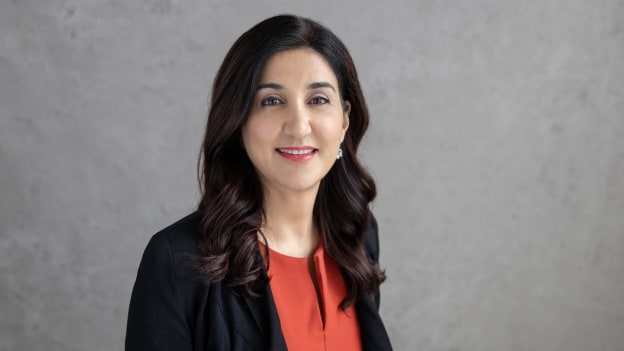Recognising the role of men in driving gender parity

READ the November 2021 issue of our magazine: Well-Being By Design
Lisa Annese is the Chief Executive Officer of Diversity Council Australia (DCA). In her career which spans over two decades, Lisa has contributed widely to the public debate on issues relating to gender pay equity, paid parental leave, women in leadership, cultural diversity and workplace flexibility. Prior to her current appointment, Lisa was DCA's Programs & Member Services Director where she provided advice and education to DCA members to improve diversity management.
Before joining DCA, Lisa worked as a Diversity Practitioner at Corrs Chambers Westgarth and Senior Manager at the Workplace Gender Equality Agency where she developed the first ever census of ‘Australian Women in Leadership’, the first-ever ‘Business Achievement Awards’ and the creation of the ‘Employer of Choice for Women’ citation.
In conversation with People Matters, Lisa talks about creating workplace opportunities for ‘hidden workers’ and the two-fold journey to embracing and promoting equal parental leave.
How does the Diversity Council Australia view the DEI landscape in the evolving business and work climate? What are your focus areas?
The diversity and inclusion conversation in Australia and in several parts of the world has been driven by the push towards gender equality. In 1984 when the Sex Discrimination Act was passed in Australia, organisations began to respond to that, and the first priority was how do we ensure women are effectively represented in leadership, how do we make sure that workplaces are respectful and take a zero-tolerance approach towards sexual harassment, and gender violence. Further, how do we create mainstream flexible work and careers, so that when women need to access flexibility due to caring responsibilities, their careers are not impacted. Another focus area was narrowing the gender pay gap.
While the DEI conversation started around gender, it then broadened out to include a conversation on culture and race, a conversation on LGBTQI+ identity, on First Nations equality and reconciliation, on having more multi-generational workplaces, on being workplaces that are inclusive of people with disabilities. And then to ensure that we don't treat these groups just as homogenous groups, but also ensure that we look for the intersection between those identities.
We've never really removed our focus from gender diversity but we have had a big focus on inclusion, one of the skill focus being towards being an inclusive leader and an inclusive organisation. Our focus areas today are across all the dimensions.
Having provided advice and education to DCA members to improve diversity management, in your observation, what were the most common challenges in terms of boosting diversity and amplifying inclusion?
Sometimes the push towards a more diverse inclusive world is seen as very politicised and can be seen as being about a progressive agenda just for the sake of social engineering, which is not the case. But once you're inside an organisation, the challenge is around organisations underestimating the complexity of this work, and that it's about transformational cultural change.
What you need to do is try and understand why workplaces are the way they are, why they benefit certain groups of people, why is it easier for certain groups of people to move into leadership, unpacking all of the above. Underestimating that is a problem.
The other challenge is that sometimes people don't take an evidence-based approach, They go along with their intuition and things that might be popular, things that might sound as though they make sense but actually when you unpack them a bit, they're not going to be the things that create transformational positive change.
The next challenge is the lack of organisation because they're underestimating the complexity which is underinvestment in terms of resourcing this work, investing in improving people's capability, planning things effectively to create impact.
Some leaders do understand this is good for their business. But they still don't understand that to make the change, you need to invest like you would with anything else. For any kind of transformation in an organisation, you have to invest in it.
A recent Harvard Business School report coined the term 'hidden workers' to reflect the missing talent pool in global hiring efforts. In your opinion, what is keeping underrepresented talent hidden despite the spotlight on DEI today?
In Australia, based on DCA’s Inclusion at Work index, the two groups that are the most excluded from Australian workplaces are people with disabilities, and First Nations peoples, and they remain in a persistent state of exclusion and remain most excluded from employment.
The important thing with trying to resolve or remedy under-representation is that you have to design effective change, and that will depend very much on the purpose for exclusion.
People with disabilities - and that's a broad group of people - are excluded from the workplace because there are flaws in the recruitment process. We know, for example, that people with autism don't do well in interview situations. But if you persist in using interviews as a tool to recruit, then you will inadvertently disadvantage people who might otherwise be highly effective in the role. And if it's to do with another form of a disability, say mobility impairment, if the organisation doesn't focus on accessibility, then even if that person gets the job they can't actually access the employment. So it depends on what it is you're trying to remedy and this goes to the heart of there are no quick fixes, this is something that needs to be well thought through.
Other things are almost outside the scope of the employer. In Australia for example, only 17% of engineering graduates are women. The decision to opt out of an engineering career happens much earlier than the interview stage for a job, it happens at school, happens in childhood. Those interventions have to be societal interventions depending on what the barrier is. It depends on the group. We know that some STEM organisations that try and get more women in STEM have had success with investing in women and girls in the education system, having targeted internship programs and making sure that when they enter the organisation, they get the support needed to be set up for success.
We certainly know that you need to design the interventions specific to the nature of the deficit that you're trying to rectify. Because broad brush, things like just focusing on general inclusion initiatives will have some benefits, but they won't create the kind of change that's desired.
Several Australia-based organisations have recently introduced equal parental leave, among other gender-neutral initiatives. Do you think employers are ready to translate the intent of equity into action or will the shift from policy to practice take longer? How can they fast track the shift?
It's important to drive change two-fold and lead by evidence because if you only focus on women, you won't change anything.
In Australia, companies have been focusing on women for a long time. They need to know that the evidence shows you need to actually focus on the men to start to create change, not just because men have power in institutions and so, therefore, they can create change, but also because when men start to work flexibly, it normalises flexible work, and therefore makes it easier for women.
Women have had to jump off the career ladder upon accessing flexibility and that cannot continue, especially as shared care gains momentum, because then men won't be encouraged to take it up and if men don't take it up, it won’t become mainstream.
It also means that the burden of unpaid work is more likely to be shared equitably in dual-parent families that are heterosexual. We have single-parent families and blended families and rainbow families but for heterosexual two-parent families, a woman's ability to fully participate in the workforce, depends a lot on childcare, and how that’s being done.
Shared care and equal parental leave are starting to take off in Australia. It's something that was inspired by the Scandinavian and the Northern European model of parental leave. We're seeing more and more men wanting to be active carers of their children. But what we're seeing is while organisations at the best practice spectrum of diversity inclusion are getting on board with this, there is a whole spectrum of other responses across the economy. We're really in the early days of that in Australia, and the signs though are really positive.
I don't know that you can fast track this.
I'm always wary about people fast-tracking anything because culture change takes time. But certainly, you can have leaders being very visible about being active carers, men talking openly in organisations about why they've done it, how the organisation enabled them to do that and what the benefits are.
If you could advise talent and business leaders to start, stop and continue one workplace mindset, what would that be?
It would be to try and have a growth focused mindset. To be open to new information, to be agile and flexible in how you respond to it, and to recognise that actually there's no endpoint to learning. When you're dealing with people, it is on a continuum. You need to be continually invested in your own change and that's really what an effective leader does. They don't have the solutions on day one and never look for any more solutions, they are continually seeking out new solutions. They also recognise that even if you make mistakes or if you have setbacks, just keep at it, build again. Make sure you don't underestimate this work and invest in it properly.














